Tranalysis
Recently, the President of the European Commission, Ursula von der Leyen, delivered a speech, accusing the Chinese market of issues such as market access, subsidies, government procurement, export controls, and overcapacity.
This year marks the 50th anniversary of the establishment of diplomatic relations between China and Europe, with significant political agendas on the horizon for both sides. Why is the European side, at such a critical juncture, not promoting China-Europe relations, especially the economic and trade ties between China and Europe, but instead turning to play the \China card\? While the European side is labeling China, can it stand firm on its own? In response to external concerns, the journalist interviewed industry insiders.
What does the European Union intend by playing the \China card\?
Just shortly after von der Leyen's speech on China, on July 12th local time, U.S. President Trump announced on social media that he would impose a 30% tariff on the EU and Mexico starting from August 1st. On July 13th local time, however, European Commission President von der Leyen announced that the EU would postpone its countermeasures against the United States, deciding to make a decision in early August, in an attempt to seize the final negotiation window.
Director Ye Bin of the European Union Law Research Office at the Institute of European Studies, Chinese Academy of Social Sciences, believes that the European side expressed a desire to strengthen China-EU economic and trade relations at the beginning of the year, but recently has frequently initiated trade frictions against China. This inconsistent attitude of the European leaders may not exclude the possibility of playing the \China card\ in an attempt to curry favor with the United States in tariff negotiations, but the result is not as she wished.
Not long ago, the European Affairs Committee of the French National Assembly also passed a 153-page report on China-EU relations, bluntly criticizing the EU's China policy as \overly dependent on the United States,\ leading to a kind of \war-like trade confrontation,\ which is more harmful than beneficial to Europe. The report calls for France and the EU to adopt a more independent stance and seek closer cooperation with China.
Under the guise of \fair competition,\ it practices \rule hegemony.\
In June this year, the European Commission announced that it would implement International Procurement Instruments (IPI) measures, prohibiting Chinese medical device manufacturers from participating in public procurement contracts worth more than 5 million euros in the EU for the next 5 years. In addition, even if non-Chinese companies participate in the bidding, if the Chinese-made products and components they use account for more than 50% of the total contract value, they will also be restricted. This measure applies to all EU member states.
It is understood that the Chinese side has issued reciprocal countermeasures, excluding EU companies from participating in government procurement projects for medical devices worth more than 45 million yuan. However, the relevant measures only target products imported from Europe, and products of European companies in China are not affected.
\The European Union's investigation this time points to 'some Chinese policies encouraging domestic hospitals to purchase domestic equipment,' which does not match the European side's understanding of Chinese policies and market conditions,\ said a person in charge of a Chinese company engaged in medical device exports to Europe. Data from the China Chamber of Commerce for Import and Export of Medicines and Health Products also supports this view - in the field of medical devices, China has long been in a trade deficit with Europe, with imports from Europe amounting to $12.5 billion in 2024 and exports to $9 billion. The person in charge also stated that multinational giants represented by Siemens, Philips, and GE Healthcare have long occupied a significant share of the Chinese market and have fully enjoyed policy treatment equivalent to that of domestic Chinese companies through localization in China. Their imported products also enjoy more favorable policies, such as the simplification of import approval procedures to a filing system, and the provision of a matching platform by the Import Expo.
Not only in the field of public procurement, industry insiders say that in recent years, the EU has been very active, using the gaps in international trade rules to create a series of unilateral tools, in the name of \fair competition\, but in reality practicing \rule hegemony\, and continuously engaging in protectionism.
In the trade sector, China is the primary target of the European Union's trade defense measures. According to information from relevant departments, in 2024, the EU initiated a total of 25 original investigations on trade defense, with 21 cases involving China. Since 2025, the intensity and frequency of the EU's trade defense measures against China have been continuously escalating.
In the fields of investment and competition, the European Union officially implemented the Foreign Subsidies Regulation (FSR) in 2023, empowering the European Commission to investigate foreign subsidies obtained by foreign companies operating in Europe. Industry insiders have indicated that since 2024, the European Commission has initiated five in-depth investigations, four of which targeted Chinese companies, and even conducted a \dawn raid\ on one company.
\The EU's identification of corporate subsidy policies is too broad, so we have to make the decision to give up participating in the European corporate consortium bids,\ said the person in charge of a company engaged in export trade to Europe, adding that the cost and risk of investing in Europe are now too high.
Industry insiders generally point out that the European review tools are neutral in legal form and do not target specific countries on the surface, but China is actually the most affected.
In the field of green transformation, under the guise of combating climate change, green barriers are being constructed: the Carbon Border Adjustment Mechanism (CBAM) has pioneered \carbon tariffs,\ mandating that exporters provide carbon emissions and some core data of the industrial chain; the Battery and Waste Batteries Regulation sets strict access conditions for the entire lifecycle of batteries; the Critical Raw Materials Act, the Electricity Market Reform Act, and the Net Zero Industry Act provide substantial subsidies in the green sector while setting procurement ratio restrictions on foreign products and other measures.
In the field of digital economy, the EU strengthens market protection with \digital rules\, relying on regulations such as the General Data Protection Regulation (GDPR), the Digital Markets Act (DMA), and the Digital Services Act (DSA), to intensify the supervision of digital companies operating within the EU. In recent years, it has issued substantial fines to companies like Apple, Meta, and AliExpress.
\The European Union's measures are more innovative, cover a broader range, are more covert, and are more discriminatory, highlighting the emergence of the EU's 'new protectionism',\ said Yao Ling, head of the European Research Institute at the Academy of International Trade and Economic Cooperation under the Ministry of Commerce.
China-Europe economic and trade relations show strong resilience, and there is still a path to explore cooperation.
In response to the recent negative remarks about China by European Commission President von der Leyen, the spokesperson for the Ministry of Commerce, He Yong, has emphasized that it is hoped that the European side can view the economic and trade relations between the two sides in a more comprehensive, objective, and positive manner. They should not exaggerate differences but should engage more in dialogue, less in confrontation, more in cooperation, and less in protectionism, discussing more matters and less \labeling\.
In Ye Bin's view, China-Europe relations are complex, and the EU's policy towards China is dualistic, with cooperation and competition coexisting as the new normal. By expanding cooperation, facing competition, and managing frictions, China and Europe can still explore the path of cooperation in maintaining multilateralism and free trade.
\At present, although the development of China-Europe economic and trade relations has encountered difficulties, it still has strong resilience,\ Yao Ling said. Looking ahead, China and Europe still need to strengthen strategic communication at the bilateral level, consolidate the positioning of the partnership, expand mutual openness and exchange cooperation; at the multilateral level, adhere to multilateralism, oppose unilateralism and protectionism, maintain the multilateral trade system with the World Trade Organization at its core and based on rules, accelerate the reform of the World Trade Organization, and work together to address global challenges such as climate change.
Official data released by China shows that over the 50 years since the establishment of diplomatic relations between China and Europe, the two sides have complemented each other's strengths in economic and trade cooperation, with bilateral trade increasing by more than 300 times. In the first half of this year, China's imports and exports to the European Union reached 2.82 trillion yuan, a year-on-year increase of 3.5%, with an average daily import and export value of over 15 billion yuan, equivalent to the trade value of a year at the time of establishing diplomatic relations. In the first half of the year, the European Union accounted for 12.9% of China's total foreign trade value, firmly holding its position as China's second-largest trading partner.
Specifically, in the first half of the year, China's exports of automotive parts to the EU increased by 9.7% year-on-year, and imports of large passenger vehicle transmissions and diesel engines from the EU increased by 40.8% and 65.2% respectively year-on-year. Imports of medical health products, bags, jewelry, etc., from the EU accounted for more than 60% of the total imports of similar products.
In terms of two-way investment, the EU is an important source of foreign investment and destination for China. As of May 2025, the EU's cumulative investment in China reached $154.3 billion, with a year-on-year increase of 1.1% from January to May. As of May 2025, China's cumulative direct investment in the EU amounted to $114.5 billion, with a year-on-year increase of 62.8% from January to May.
This year, CEOs from European companies such as Mercedes-Benz, Airbus, Sanofi, and Philips have come to China one after another, exploring opportunities in the Chinese market. Additionally, according to the reporter's understanding, the Ministry of Commerce will soon hold a China-Europe business leaders' symposium in conjunction with high-level exchanges. Entrepreneurs are very much looking forward to this and are actively signing up to participate. It can be seen that businesses still have full confidence in China-Europe cooperation, looking forward to achieving more economic and trade outcomes between China and Europe that will benefit both sides' enterprises.




